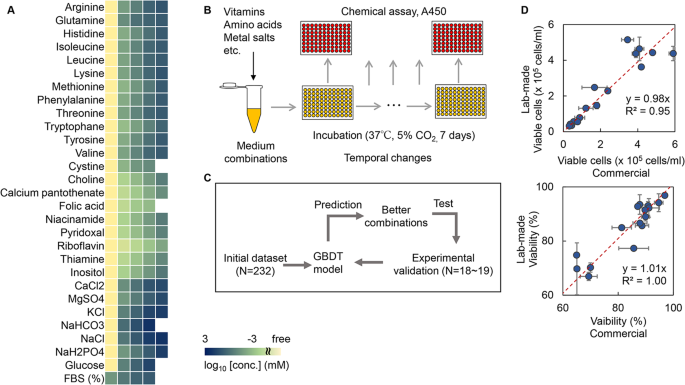・We introduced machine learning to finetune the medium components for improved mammalian cell culture.
・Our study demonstrated the efficiency and practicality of active learning for medium optimization and provided valuable information for employing machine learning in cell culture research and development.
・The successful trial provides valuable know-how for further applications of machine learning-assisted medium development in biomedical applications and biopharmaceutical production.
Abstract
It is increasingly important to develop approaches that can efficiently optimize culture medium, as developing culture medium for mammalian cells is essential in the medical and biopharmaceutical fields.
However, it is challenging to optimize medium because the influence of components in medium on cellular metabolism is complex. The cell line HeLa-S3 and the gradient-boosting decision tree algorithm were used to find optimized media as pilot studies. To acquire the training data, cell culture was performed in a large variety of medium combinations. The cellular NAD(P)H abundance, represented as A450, was used to indicate the goodness of culture media. In active learning, regular and time-saving modes were developed using culture data at 168 h and 96 h, respectively. Both modes successfully fine-tuned 29 components to generate a medium for improved cell culture. Intriguingly, the two modes provided different predictions for the concentrations of vitamins and amino acids, and a significant decrease was commonly predicted for fetal bovine serum (FBS) compared to the commercial medium. In addition, active learning-assisted medium optimization significantly increased the cellular concentration of NAD(P)H, an active chemical with a constant abundance in living cells.
Benefit
Optimization of the medium composition to improve cell culture using active learning combining explanatory machine learning.
Market Application
The methodology can be applied to developing culture media for all cell types and culture purposes and widely contribute to industries and academics based on cell culture, such as drug development and regenerative medicine.
Publications
https://www.nature.com/articles/s41540-023-00284-7


